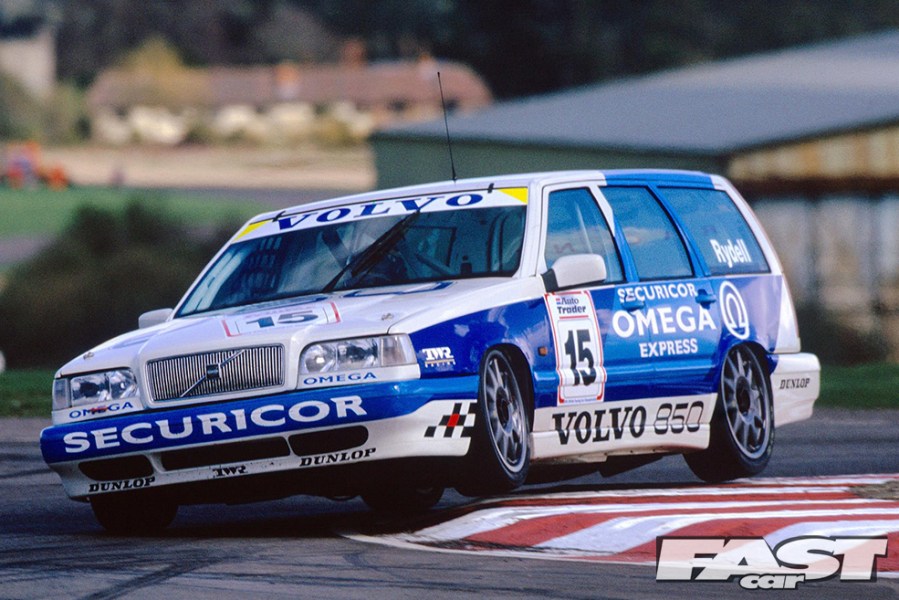Looking for the best and fastest estate cars? Well look no further!
Fast estate cars are brilliantly unnecessary, which is just why we love them. Powerful versions of coupes, saloons or hatchbacks always make sense, convention dictates that this is the way things work. But estates? They’re sensible cars, for people who wear a lot of beige corduroy and watch Songs of Praise and make jam for the WI.
Your dad’s straight-laced mate has one, because he’s got a couple of big dogs to ferry about the place and he finds it useful when he needs to take old furniture to the tip. He bundles the family in along with a bunch of camping gear and hauls them all over Europe. Why on earth would you want to take that boxy, utilitarian machine and make it fast? What possible benefit could that have?
Well, there are four main reasons. Number one: it’s boring taking stuff to the tip, so it’s useful to get it done quickly. Number two: the kids will enjoy that heady hit of adrenaline when you put your foot down and make the scenery go all blurry. Number three: see number two, but for the dogs. And number four: it’s just awesome. Life’s too short to drive boring cars. If you’ve got a sensible, practical car, it may as well be fast too, right?
So in a time when everyone’s buying SUVs, the idea of a fast estate car really isn’t that unnecessary after all. It’s everything you’d want from a car, without the grim realisation that you’ve had to give up on life and get a Qashqai. Fast estates tick every conceivable lifestyle box at once. And here are some of our favourites…
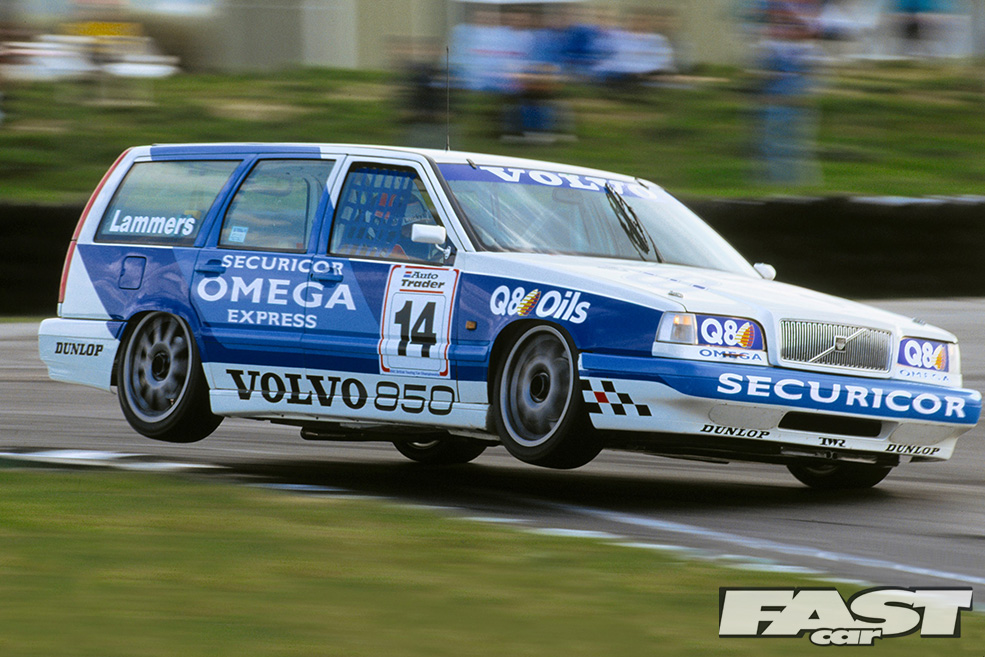
Volvo 850 BTCC
We’re starting with arguably the greatest ever example of the fast estate car – a creation so utterly absurd that we still can’t quite believe it exists. Sure, everyone’s heard of it now and you’ve all seen photos of these whoppers hopping over kerbs. But if, like us, you were trackside at Brands Hatch back in 1994 when Volvo rolled this thing out onto the circuit, you’ll remember how the massive crowds were momentarily silenced by the sheer weirdness of it.
A racing car… an estate car… what the hell was happening? Well, working with TWR, Volvo took the conventional BTCC setup (throwing out the road car’s 225bhp 2.3-litre turbo motor and replacing it with a 290bhp nat-asp 2.0-litre in line with the rules) and jammed it into a station wagon. You’d think that it’d be a crap race car, with that high centre-of-gravity and extra weight, but the Kamm tail actually made it pretty aerodynamic! It was a PR exercise really, but it worked brilliantly. It’s the first thing people think of when you mention 1990s Touring Cars. People thought Volvo was all about dull estate cars, so they threw it right back in everyone’s faces.

BMW M5 Touring (E61)
The E61-generation M5 Touring is a car that never needed to exist, which is exactly why it does. On the one hand, you’ve got the sensible-trousers shell of a sodding great 5 Series wagon. On the other hand, you’ve got a true-blue M car with a motorsport-derived 5.0-litre V10 kicking out a wild 500bhp. Put your hands together, and you end up clapping out something very silly indeed. 0-62mph in 4.8 seconds and, if you remove the limiter, 200mph+ potential. Plus space for a wardrobe in the back.
OK, you’ll have to stop at every single petrol station you come across, and when you tot up the servicing costs, you might as well have bought a supercar, but this loopy car is quite possibly the last of its kind: it was such a niche, unpopular variant that it’s unlikely BMW will ever bother making an M5 estate again. And to the untrained eye, it could be just another dadwagon.
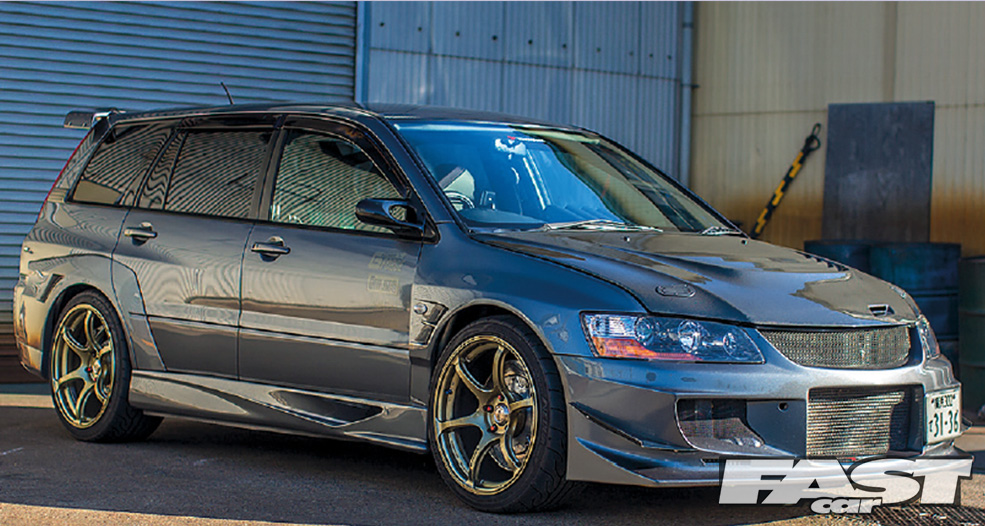
Mitsubishi Lancer Evo Wagon
Mitsubishi Evos will always have a special place in the heart of a certain kind of car enthusiast. The spiralling lunacy of the rally stage horsepower wars saw Subaru and Mitsubishi spurring each other on to approach, breach and dive over the brink of peril for years. You were either an Impreza fan or an Evo fan, and each new version featured fabulously nerdy details. And why not shove all of that tech and horsepower into a big-booty load-lugger?
This may have the look of something built by a backstreet chop-shop, but the Evo Wagon was actually an official factory model, albeit only for the Japanese market. Everything chassis-wise is identical to the Evo IX (aside from the lack of Super Active Yaw Control, although with that extra mass over the tail it doesn’t really need it), along with the bonkers 300bhp+ turbo motor. Annoyingly it had the option of an automatic gearbox, but it wouldn’t be hard to swap a proper one in there – and even with the slushbox it’ll peg 0-62mph in five seconds. Imagine fitting one of these out to rally specs and throwing it through some forests…
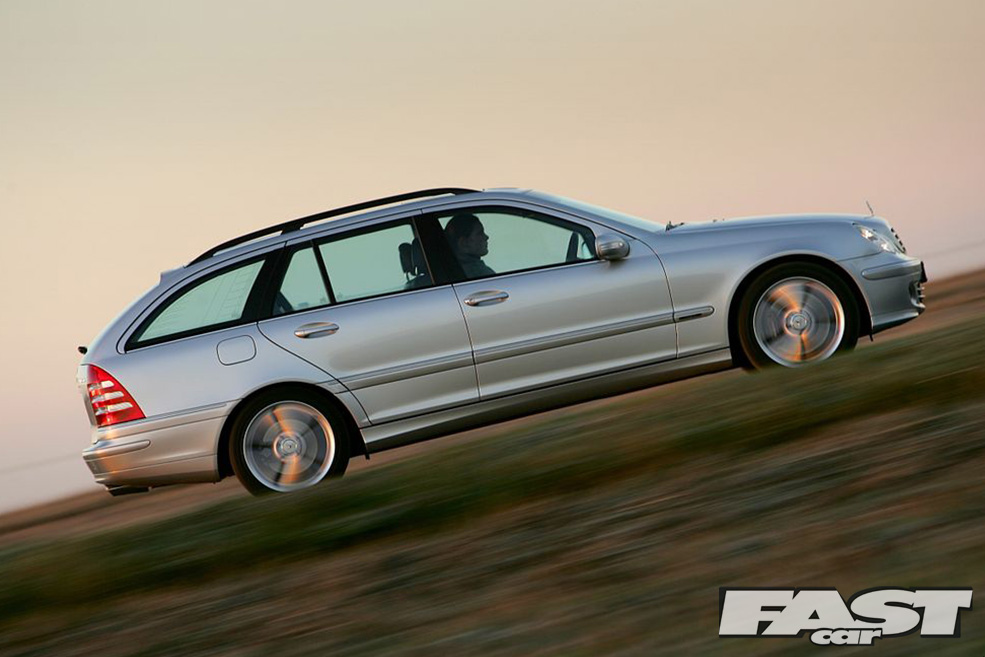
Mercedes-Benz C55 AMG
When you’re thinking about hot estates, there are so many AMG Mercs to choose from. Like, a ridiculous amount. Mercedes love all this stuff. But perhaps the most interesting is the C55 AMG, of which just 55 examples were sold in the UK between 2004-07. Its predecessor had a supercharged V6, but for the 2004 model year they decided to revert back to good ol’ nat-asp V8 power.
The 5.4-litre unit grumbles out 362bhp in factory form, and it’s just so AMG – whisper-quiet at idle, roaring to a muscle car crescendo when you wring its neck. The chassis was superb, the equipment list was stellar, and the C55 had the brawn to match BMW’s M3… with the added bonus that you couldn’t get an M3 estate. Those fifty-five buyers were on to a hot little secret here.
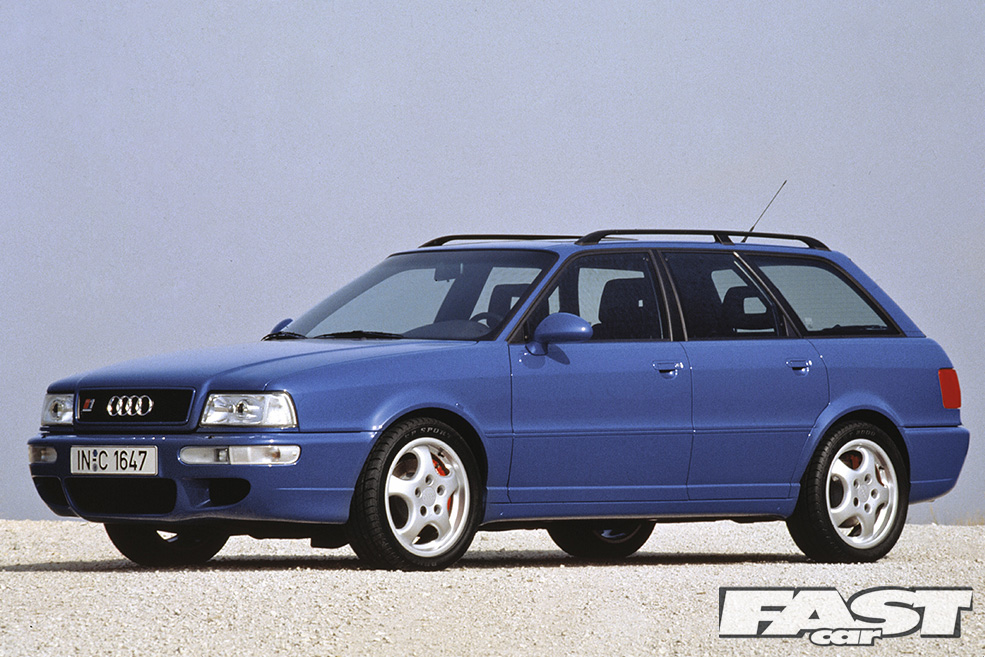
Audi RS2 Avant
Much like with the Mercs, there’s an incredible number of fast Audi Avants too. But the daddy of them all, the original, is the RS2 of 1994. Back in the Britpop era, fast estates weren’t really a thing in any meaningful sense, which made the RS2 seem like a totally mad idea (although, to be fair, it’s still totally mad today). A collaboration between Audi and Porsche, it took the 80 Avant as a base and stirred in a tweaked 2.2-litre five-cylinder turbo motor, producing 311bhp. Consider the context – in the mid-’90s, this was high-end sports car power. The move was unprecedented. And owners were very keen to boast that it accelerated from 0-30mph quicker than a McLaren F1.
The RS2 wasn’t just about massive horsepower though. With final assembly completed by Porsche in Zuffenhausen, the spec list boasted Porsche Cup brakes stolen straight from the 964-generation 911, Porsche-developed suspension, hell, it even had a Porsche-style front bumper. This was basically a car for people who wanted a 911 Turbo but also liked to go to a lot of car boot sales.
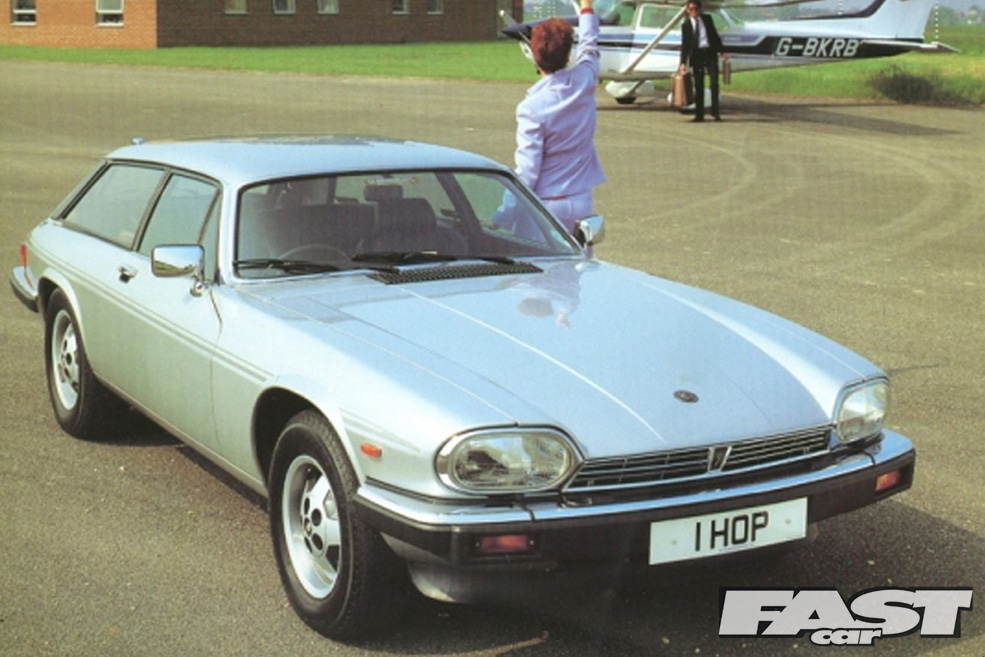
Lynx Eventer
If you like your estate cars posh, you might be more of a ‘shooting brake’ kind of a person. A shooting brake is, in general, a two-door estate (although not always), coachbuilt on the base of a posh car that wouldn’t normally be an estate – like the Aston Martin DB5, for example. And perhaps the coolest of them all is the Lynx Eventer.
This is basically a Jaguar XJ-S with a bunch of junk in the trunk; built by Lynx, a company that started out making C- and D-Type Jag replicas back in 1973, their remit was effectively to hack off the flying buttresses that a lot of people seemed to hate and replace them with some really big side windows. So you had a whacking great V12 up front, oodles of wood and leather in the middle, and space for your rifles and a couple of gundogs out back. How swanky is that?
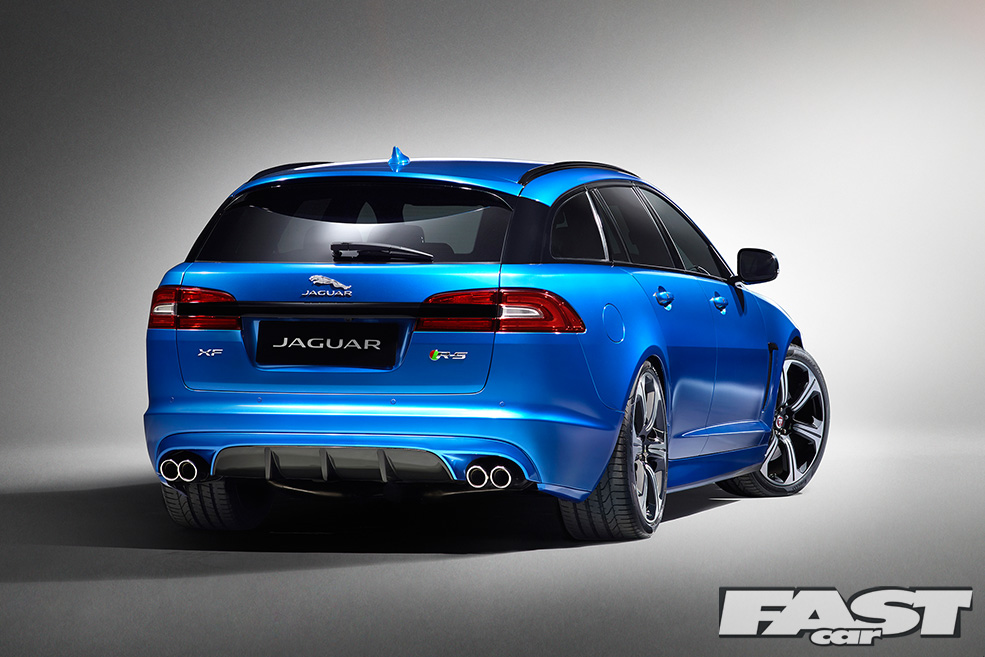
Jaguar XFR-S Sportbrake
The big cats at Jaguar evidently warmed to the theme of fast estates over the years – just look at the mighty XFR-S Sportbrake. The XF upon which it’s based was originally conceived as a mid-size luxury car to take on the likes of the Audi A6 and BMW 5 Series, and it’s safe to say the R-S version was aiming squarely at those brands’ respective RS and M variants. The fact that Jaguar decided to squeeze all of these goodies into the Sportbrake is deliciously barmy; we’re talking 542bhp from a supercharged 5.0-litre V8, a chassis that was obsessively honed at the Nürburgring, paddle-shift and an LSD.
This, essentially, is the world’s greatest getaway car. You know how villains used to use Mk2 Jags in the 1960s to escape from bank raids, and the police got so worked up they started using Jags too? Well, with the XFR-S you could relive that mischief, with the added benefit that you could also use it to carry out the initial ram-raid and cart off the bullion in the back. And if the rozzers chased you onto the Nürburgring, they wouldn’t stand a chance.
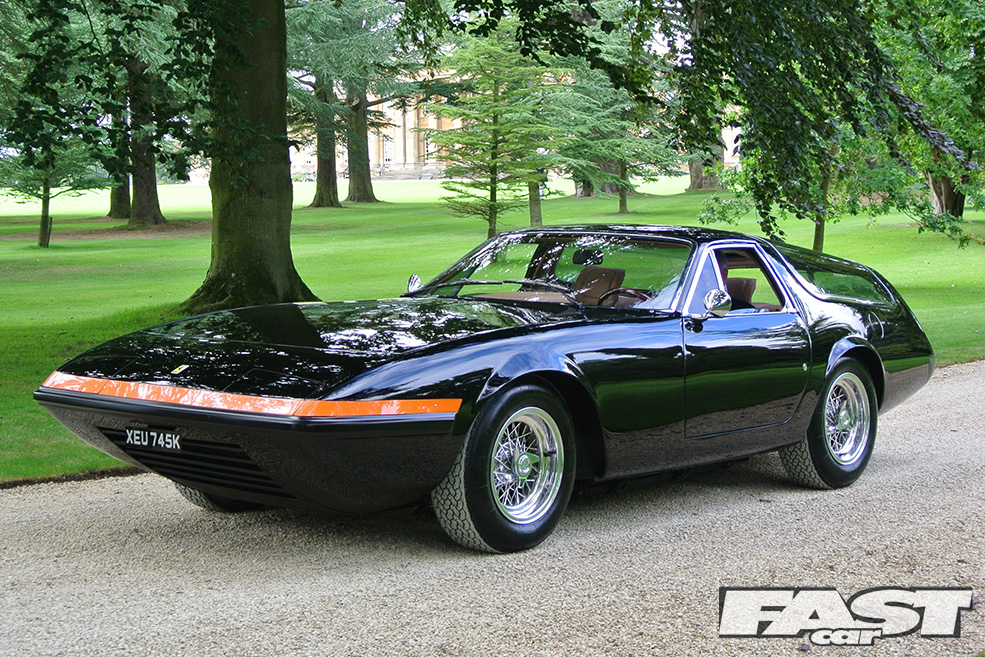
Ferrari Daytona Shooting Brake
This car has the honour of being the first Ferrari to be built in the UK. The 1972 365 GTB/4 (aka ‘Daytona’) was originally delivered to the USA; the story goes that a real estate developer by the name of Bob Gittleman walked into the dealership and asked for ‘something a little different’. Importer Luigi ‘Coco’ Chinetti was eager to oblige and, having considerable clout in the sale of Ferraris in North America, set about creating something truly special. A custom shooting brake was penned, and since Chinetti Motors were official importers of Panther Cars, and Chinetti was impressed by the facilities at the Panther Westwinds base in Surrey, he handed them the job.
Panther’s remodelling retained very little of the original body, and their creative approach to rear accessibility saw them use a pair of roof-hinged beetle-wing windows rather than a traditional tailgate. The vast rear glass was a shop window for the speedboat-style wooden decking within, and the 4.4-litre quad-cam V12 offered up a meaty 352bhp. It could sprint to 60mph in under six seconds. Although you wouldn’t be doing that, of course – being a shooting brake, you’d be bumping it across the grounds of your estate, the rear end stuffed with freshly stunned grouse, right?
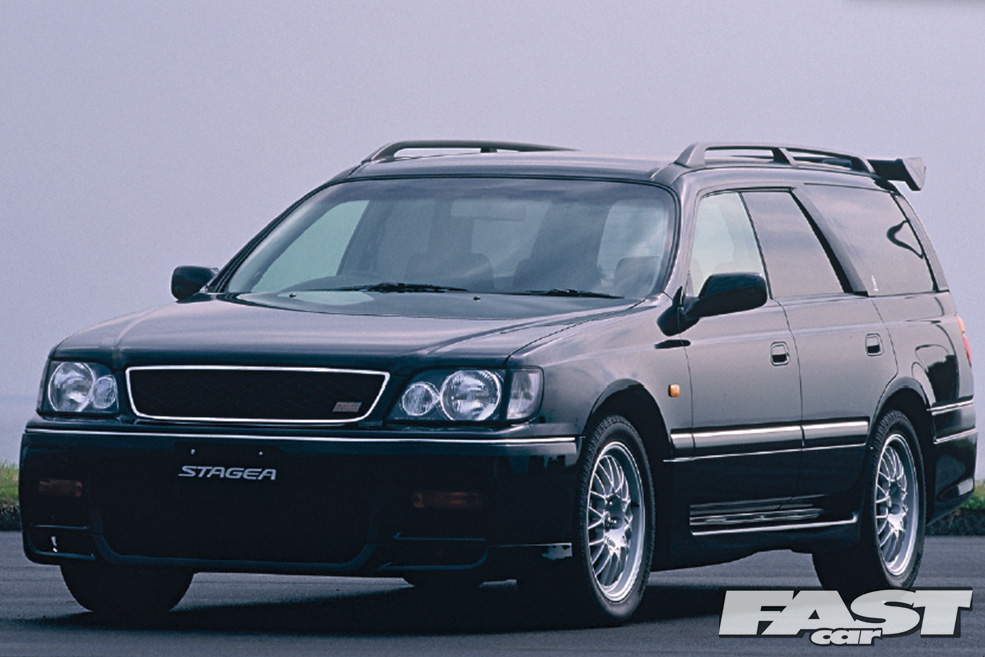
Nissan Stagea 260RS Autech
The Stagea was basically a Skyline estate, built for the Japanese domestic market to compete with the likes of the Subaru Legacy. You could get them with a variety of humdrum engine and transmission options, but of course Japanese manufacturers have always been a little bit loopy when it comes to performance, and with a stableful of hot Nissan mechanicals sitting there, it’d be mad not to create a fast estate, no?
As such, the Stagea 260RS Autech exists. This practical load-lugger hides the engine, 4WD system and other oily bits from the R33-generation Skyline GT-R, which is frankly so silly we can barely cope. The RB26DETT served up the gentlemen’s-agreement 276bhp (i.e. probably a fair bit more than that), and you got Brembo brakes, BBS wheels, an LSD, and all the clever chassis stuff you’d find in an R33. If you want to be Godzilla at the weekends but flog photocopiers during the week, this is the monster for you.
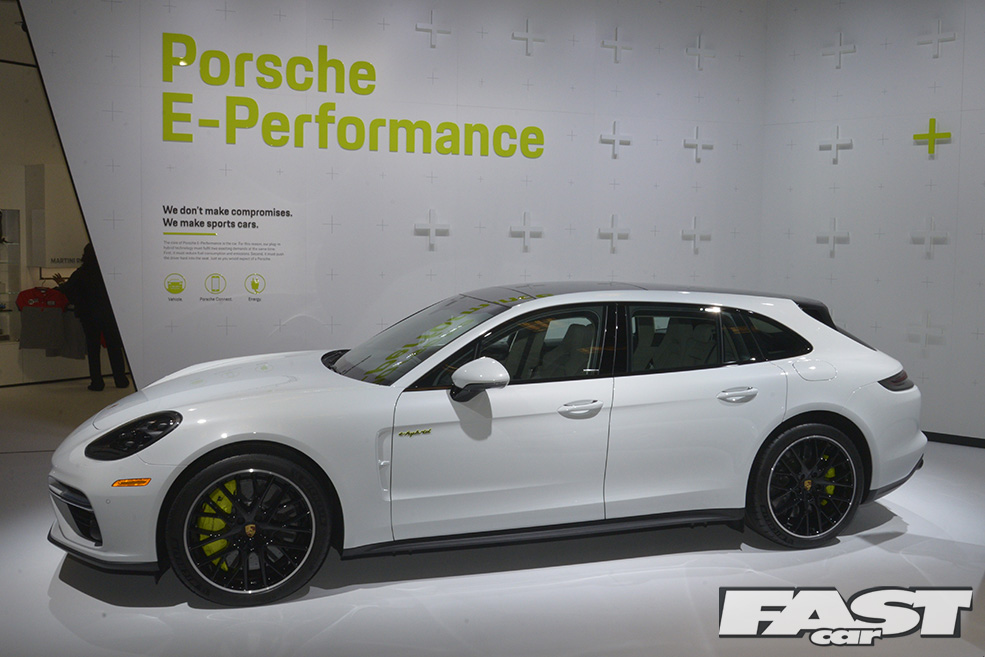
Porsche Panamera Sport Turismo Turbo S E-Hybrid
The cult of the fast estate isn’t slowing down any time soon, if Porsche’s extensively-named e-wagon is anything to go by. The cosmic mouthful that is the Panamera Sport Turismo Turbo S E-Hybrid shows us the future of fast estate cars in pretty devastating style. Just check out the specs: it’s got a 4.0-litre twin-turbo V8, mated to a juicy electric motor and an 8-speed PDK gearbox. Peak power is 671bhp, which is mental, but the really big number here is the torque figure of 627lb.ft, which is all available from just 1,400rpm.
What this means is that you can be idling the car over here at the lights, slightly flex your ankle, and without realising you’ll suddenly be way over there. It’s almost as powerful as the hooligan 911 GT2 RS, but you can get your kids in the back, and leap across all of Europe in about twenty minutes (or thereabouts, probably). Sure, it costs £140k, but it’s more of a private jet than it is a car. And a-hundred-and-forty-grand is actually quite reasonable for a private jet.
Words Dan Bevis

